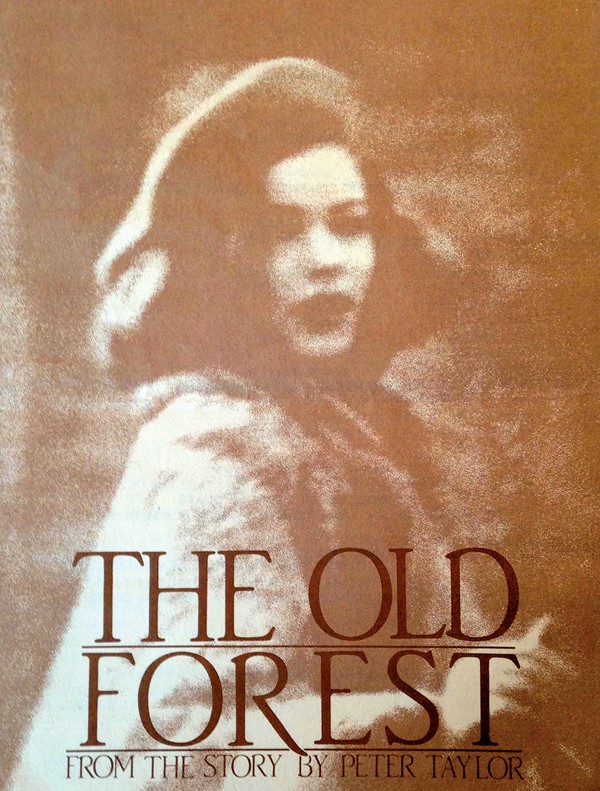“In the very heart of the City of Memphis, there is a forest. As old as history, and just as tangled.” So begins Steven John Ross’ adaptation of Peter Taylor’s The Old Forest (the screenplay is by Ross, David Appleby, Susan Howe, and Joseph Mulherin). The film was made in Memphis and came out in 1984, long before there was a film scene in town. (See Chris Davis’ interview with Ross on page 48.) Thirty years on, The Old Forest is back for an encore, playing at On Location: Memphis International Film & Music Fest this Saturday. The film was produced by the then-Memphis State University’s Department of Theatre and Communication Arts and only could have happened with Taylor’s permission. It’s a remarkable work and well worth seeing, either for the first time in years or the first time ever.

The Old Forest is set in the actual Old Forest in Overton Park. (In light of our city’s appetite for concrete, it’s kind of amazing it’s still there.) It takes place in 1937 and considers the convergence of high society Memphis with increasingly empowered, independent-minded women of less proper social standing. Caught in the middle is Nat Ramsey (Peter White), scion of a cotton family. Dinner-table conversation turns to the Cotton Carnival and Nat’s engagement to Caroline Braxley (Jane Wallace), a beauty whose family is no less well off. The problem is that Nat has more fun with the likes of Lee Ann Deehart (Beverly Moore) and her pals (played by Shannon Cochran, Amy Shouse, Kathryn Murry, and Cynthia Moore): women who are relatively liberated, liberally educated, who don’t have wealthy families to have to please, and who like to dance, drink, neck, and drive fast, just like the boys. Or, as the film has it, “Girls who weren’t heirs to anything, and they couldn’t have cared less.”
Nat and Lee Ann get in a fender bender in the Old Forest. Nat sustains a head injury, and Lee Ann flees the scene. The police want to know where she went and if she was hurt. The threat of scandal is right there beyond the horizon. It just wouldn’t do for it to make the papers. Nat’s engagement to Caroline, her reputation, even their family’s interests are suddenly all imperiled. Even the mayor is concerned.
The film is narrated wonderfully by Taylor himself. Lines leap out of the plot. About the Latin poetry class Nat takes at Southwestern (now Rhodes), postponing the wedding: “the only way to experience the very isolation I dreaded so much.” About the Old Forest itself: “Men here have always been wary of this place.” About a women’s boarding house: “I hope I never see the day your sister Nancy lives in one of these places.”
The Old Forest pops, with perfect period costumes (Candice Cain), cars, and locations (art directors Chris Wright and Thurston Hall Prewitt), Benny Goodman on the radio, and an excellent dramatic score by Mark Blumberg. The whole production made me think more than once of Downton Abbey.
White is great as Ramsey. He evokes thoughts of Christopher Reeve, with a powerful confidence, but also a Southern intelligence that anachronisticly calls to mind both Walton Goggins and Timothy Olyphant.
The Old Forest is better than either adaptation of The Great Gatsby. Admittedly, that bar is low, but The Old Forest clears it by a mile. ■